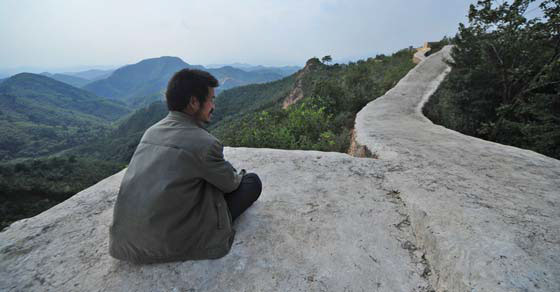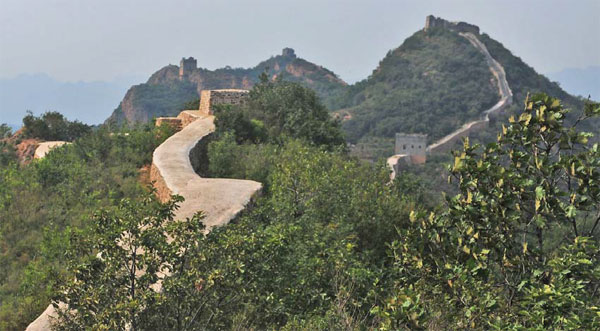Probe launched into Great Wall renovation
Ancient relics should be treated like works of art, heritage official says after outrage online
An investigation has been launched into the renovation of a section of the Great Wall in northeastern China that has been heavy criticized online for the quality of the work.
Pictures of a 2-kilometer stretch of the wall in Suizhong county, Liaoning province, show it has been covered with a flat protective layer, giving it the appearance of a paved road.
|
A section of the Great Wall was repaired in Suizhong county, Liaoning province, with what officials said was sand. But critics of the work said it was cement. Zhang Shiyao / For China Daily |

Work on the 700-year-old section was wrapped up in 2014, but the issue did not come to light until the pictures were widely circulated online.
The State Administration of Cultural Heritage has sent a team to investigate and warns that no one involved in the project "will be pardoned" if any quality problems are confirmed.
After an initial inspection, the authority said the materials used in the renovation were not as hard as suspected, and that it would be possible to restore the original appearance of the wall if the investigation team deems it necessary.
"The point is, we can't treat the restoration of cultural relics like a general construction project," Song Xinchao, deputy director of the administration, said on Sept 23. "They should be treated like pieces of art."
Song was in Jiayuguan, Gansu province, where the western end of the 8,000-km Ming Dynasty (1368-1644) section of the wall is located. He spoke to 50 primary school students at the foot of the wall to promote awareness of protecting the World Heritage site.
"Education is the key to protecting the wall, not money. We need to make people see that the Great Wall is part of their daily lives. But the wall cannot be disturbed too much," Song says, although he adds that finding a balance is difficult.
According to the administration, more than 20,000 km of the Great Wall, which was built over several dynasties, are spread over 15 provincial regions.
"Construction materials vary widely between periods and regions, which means our restoration methods need to be diverse," Song says.
An investigation by the Great Wall Society of China showed only 8 percent of the Ming Dynasty wall is well preserved, with 31 percent almost entirely gone.
"It's unrealistic to think the wall should be intact. Some sections have diminished over time, but reconstruction may not be necessary. An important rule in restoration is to intervene as little as possible," Song says.
He adds that daily maintenance is more important than large-scale restoration.
"Not every section of the wall has to be like Badaling," he says, referring to the much-visited section in Beijing.
The administration introduced standards for the restoration and management of the Great Wall in August.
Song also urges authorities that manage tourist attractions along the wall need to take more responsibility in protecting cultural relics.
wangkaihao@chinadaily.com.cn
(China Daily Africa Weekly 09/30/2016 page3)



















